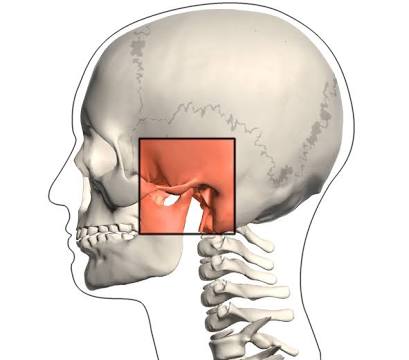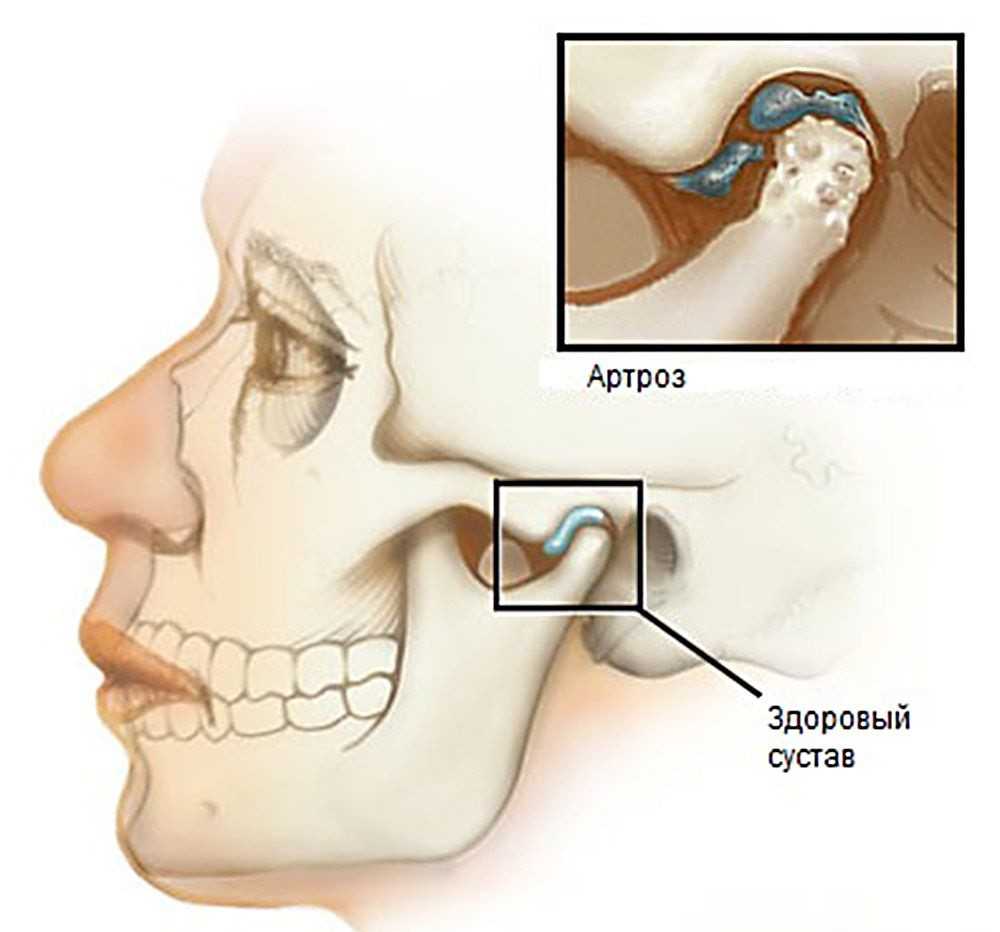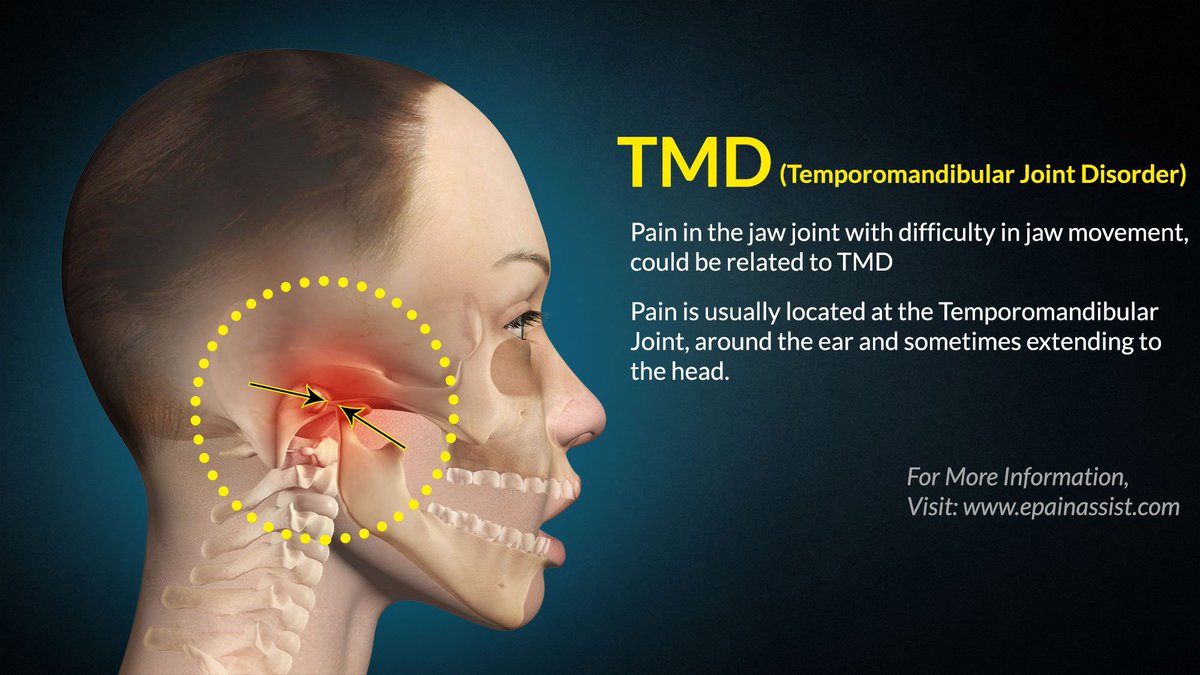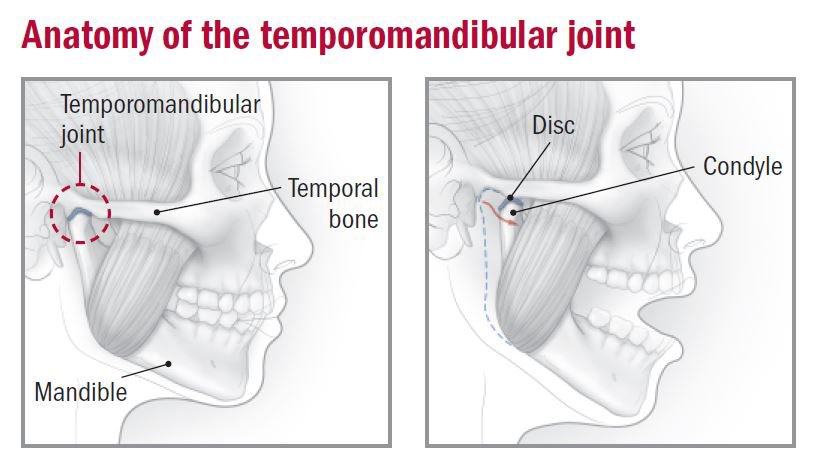Is the jaw a joint. Temporomandibular Joint Disorders: Understanding TMJ Symptoms, Causes, and Treatments
What are temporomandibular joint disorders. How do TMJ disorders affect jaw function and overall health. What causes TMJ problems and who is most at risk. How are TMJ disorders diagnosed and treated effectively.
What Is the Temporomandibular Joint (TMJ)?
The temporomandibular joint (TMJ) is a complex hinge and gliding joint that connects the jawbone to the skull. Located on both sides of the head just in front of the ears, the TMJ allows for the opening and closing of the mouth as well as side-to-side and forward movement of the jaw. This joint plays a crucial role in essential functions like speaking, chewing, and swallowing.
The TMJ is composed of several key components:
- The mandibular condyle – the rounded upper end of the lower jawbone
- The mandibular fossa – the socket in the temporal bone of the skull
- An articular disc – a cushioning pad between the bones
- Ligaments, tendons, and muscles surrounding the joint
This intricate structure allows for the wide range of jaw movements we rely on daily. However, its complexity also makes the TMJ susceptible to various disorders and dysfunctions.
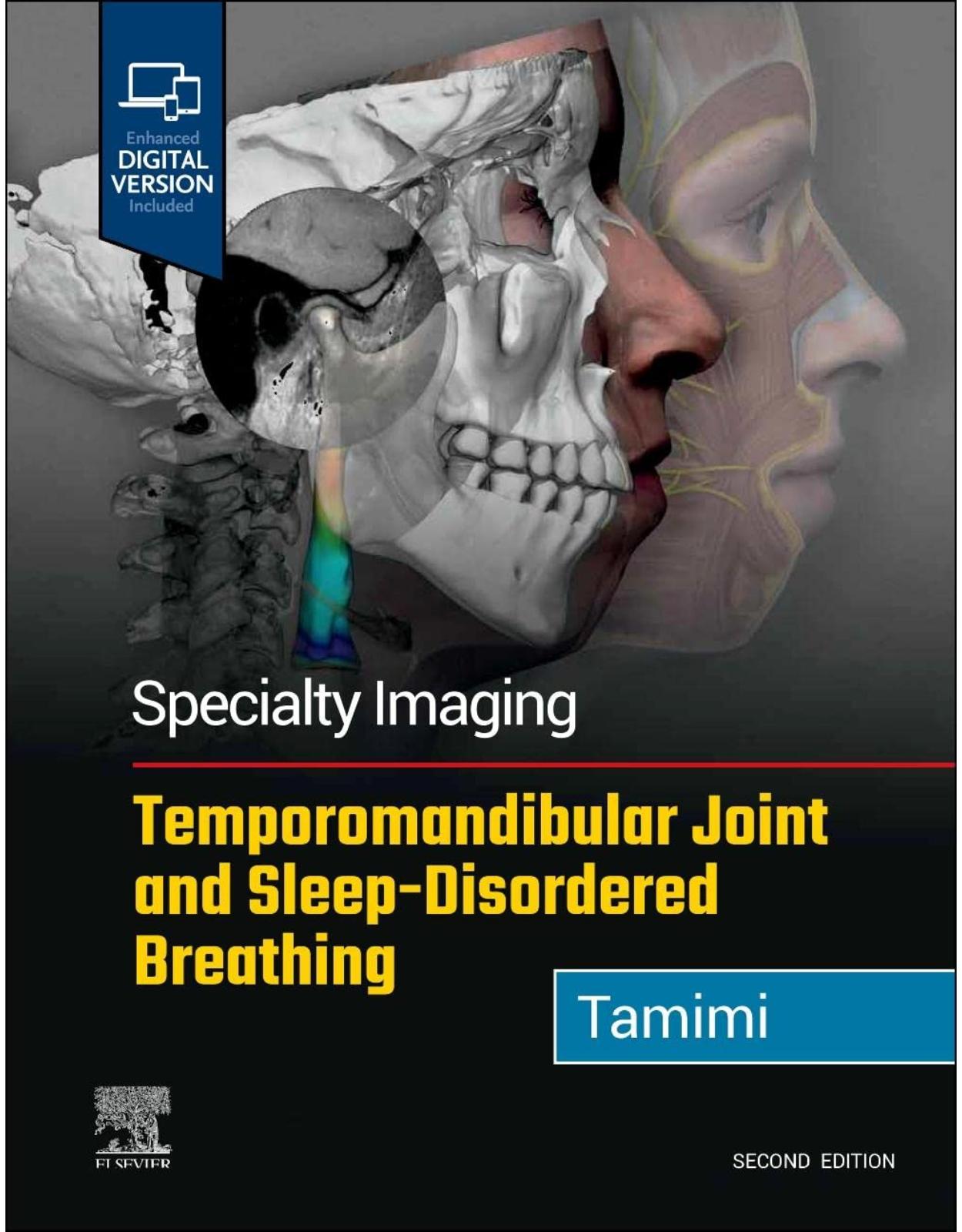
Understanding Temporomandibular Disorders (TMDs)
Temporomandibular disorders (TMDs) encompass a group of conditions affecting the TMJ and the muscles controlling jaw movement. These disorders can cause pain, discomfort, and limited jaw function. TMDs are quite common, with recent studies indicating that approximately 11-12 million adults in the United States experience pain in the temporomandibular region.
TMDs are classified into three main categories:
- Joint disorders – affecting the TMJ itself
- Muscle disorders – impacting the masticatory (chewing) muscles
- TMD-associated headaches
It’s important to note that an individual may experience one or more of these conditions simultaneously. While many TMDs resolve on their own, some cases can become chronic and significantly impact quality of life.
Who is at risk for developing TMDs?
Temporomandibular disorders affect people of all ages, but certain factors may increase the risk:
- Gender: Women are twice as likely as men to develop TMDs, with the highest prevalence among women aged 35-44.
- Age: TMDs are most common in adults between 20 and 40 years old.
- Stress: High levels of stress and anxiety may contribute to TMD development.
- Other pain conditions: Individuals with conditions like fibromyalgia or chronic headaches may be more susceptible.
- Jaw injuries: Past trauma to the jaw or TMJ can increase the likelihood of TMDs.
Common Symptoms of TMJ Disorders
Recognizing the symptoms of TMDs is crucial for early diagnosis and treatment. While some jaw sounds like clicking or popping are common and typically don’t require intervention, other signs may indicate a TMD:
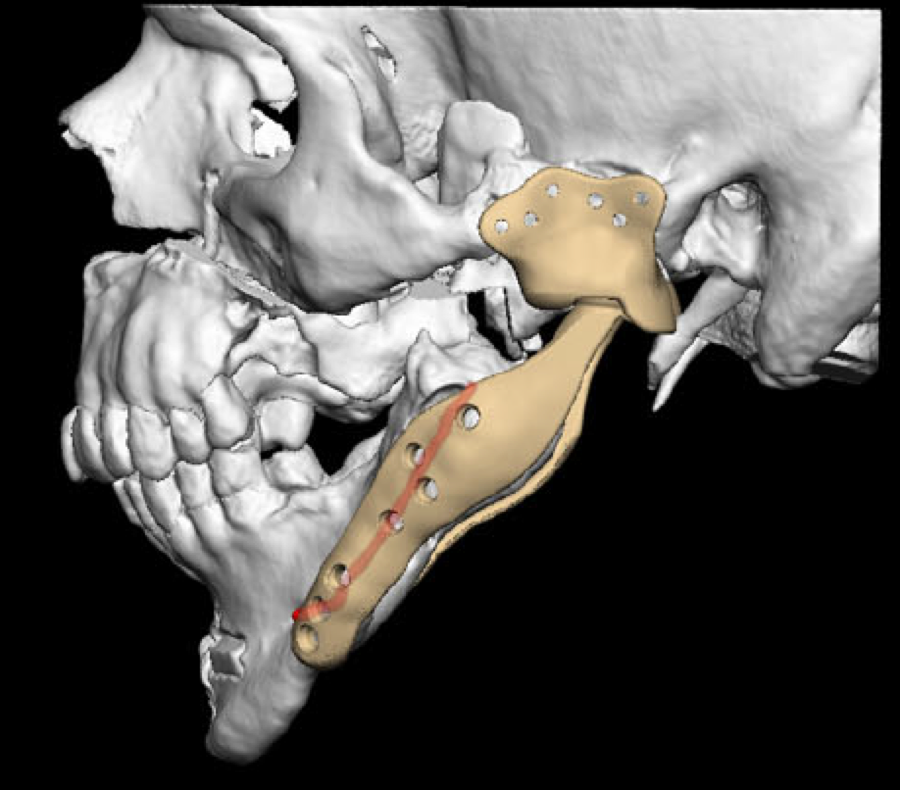
- Pain or tenderness in the jaw, face, neck, or shoulders
- Difficulty or discomfort while chewing
- Limited jaw movement or jaw “locking”
- Painful clicking, popping, or grating sounds when opening or closing the mouth
- A change in how the upper and lower teeth fit together
- Earaches, hearing problems, or dizziness
- Headaches, particularly in the temple area
Do all TMJ disorders cause pain? While pain is a common symptom, not all TMDs are painful. Some individuals may experience only limited jaw movement or unusual sounds without discomfort. However, persistent symptoms should be evaluated by a healthcare professional.
Potential Causes and Risk Factors for TMJ Disorders
The exact causes of TMDs are often unclear, and in many cases, symptoms seem to develop without an obvious trigger. However, research has identified several factors that may contribute to the development or exacerbation of TMJ disorders:
Physical Factors
- Jaw injury or trauma
- Arthritis affecting the TMJ
- Chronic teeth grinding or clenching (bruxism)
- Misalignment of the jaw or teeth
- Connective tissue diseases
Psychological and Lifestyle Factors
- Chronic stress and anxiety
- Poor posture
- Lack of sleep or poor sleep quality
- Dietary habits (e.g., excessive gum chewing)
Genetic and Hormonal Factors
- Genetic predisposition to pain sensitivity
- Hormonal changes, particularly in women
Can orthodontic treatment cause TMDs? Contrary to popular belief, research does not support the notion that orthodontic treatment or a “bad bite” directly causes TMJ disorders. However, if you experience TMD symptoms during or after orthodontic treatment, consult your orthodontist or dentist for evaluation.

Diagnosing Temporomandibular Disorders
Diagnosing TMDs can be challenging due to the complexity of the joint and the variety of potential causes. Currently, there is no single standardized test for TMD diagnosis. Instead, healthcare professionals typically use a combination of methods to assess and diagnose these disorders:
Medical History and Physical Examination
Your doctor or dentist will begin by taking a detailed medical history, asking about your symptoms, their onset, and any factors that worsen or alleviate them. They will also perform a physical examination of your head, neck, face, and jaw, looking for:
- Areas of tenderness or pain
- Range of motion in the jaw
- Jaw alignment
- Unusual sounds during jaw movement
Imaging Studies
In some cases, imaging studies may be recommended to get a clearer picture of the TMJ and surrounding structures:
- X-rays: To examine the bones and check for arthritis or fractures
- Magnetic Resonance Imaging (MRI): To evaluate soft tissues, including the articular disc
- Computed Tomography (CT) scan: To provide detailed images of the bones involved in the joint
Specialized Tests
Depending on the suspected cause, additional tests may be performed:
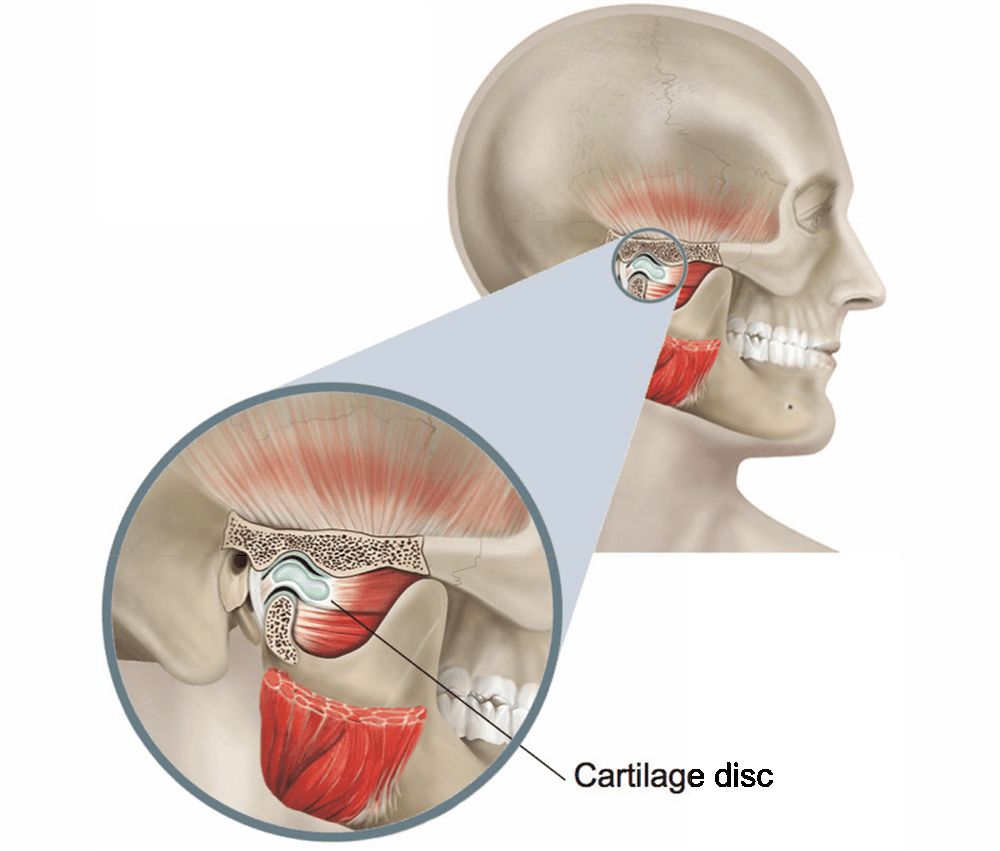
- Electromyography: To assess muscle function
- Temporomandibular joint arthroscopy: A minimally invasive procedure to examine the inside of the joint
How long does it take to diagnose a TMJ disorder? The diagnosis process can vary depending on the complexity of the case. Some TMDs may be diagnosed in a single visit, while others may require multiple appointments and tests over several weeks.
Treatment Options for TMJ Disorders
The treatment approach for TMDs depends on the specific diagnosis, severity of symptoms, and individual patient factors. In many cases, TMD symptoms improve or resolve with conservative, non-invasive treatments. The primary goals of TMD treatment are to alleviate pain, improve jaw function, and enhance overall quality of life.
Conservative Treatments
For mild to moderate TMDs, initial treatment often focuses on self-care and non-invasive therapies:
- Lifestyle modifications: Eating soft foods, avoiding extreme jaw movements
- Heat or cold therapy: Applying warm or cold packs to the affected area
- Over-the-counter pain relievers: Non-steroidal anti-inflammatory drugs (NSAIDs) to reduce pain and inflammation
- Jaw exercises: Gentle stretching and strengthening exercises
- Stress management techniques: Relaxation exercises, meditation, or counseling
- Oral appliances: Custom-fitted mouthguards or splints to reduce teeth grinding and clenching
Physical Therapy
Physical therapy can be beneficial for many TMD patients. A physical therapist may use techniques such as:

- Manual therapy to improve jaw mobility
- Ultrasound or electrical stimulation to reduce pain and inflammation
- Posture training to alleviate strain on the TMJ
- Exercises to improve jaw strength and coordination
Medications
In some cases, medications may be prescribed to manage TMD symptoms:
- Prescription-strength NSAIDs
- Muscle relaxants
- Tricyclic antidepressants (for pain relief and improved sleep)
- Corticosteroid injections (for severe inflammation)
Minimally Invasive Procedures
For persistent TMDs that don’t respond to conservative treatments, minimally invasive procedures may be considered:
- Arthrocentesis: Flushing the joint to remove inflammatory byproducts
- Botulinum toxin injections: To relax overactive jaw muscles
- Arthroscopy: A procedure to remove scar tissue or reposition the articular disc
Surgical Interventions
Surgery is typically considered a last resort for TMD treatment and is reserved for severe cases that haven’t responded to other therapies. Surgical options may include:
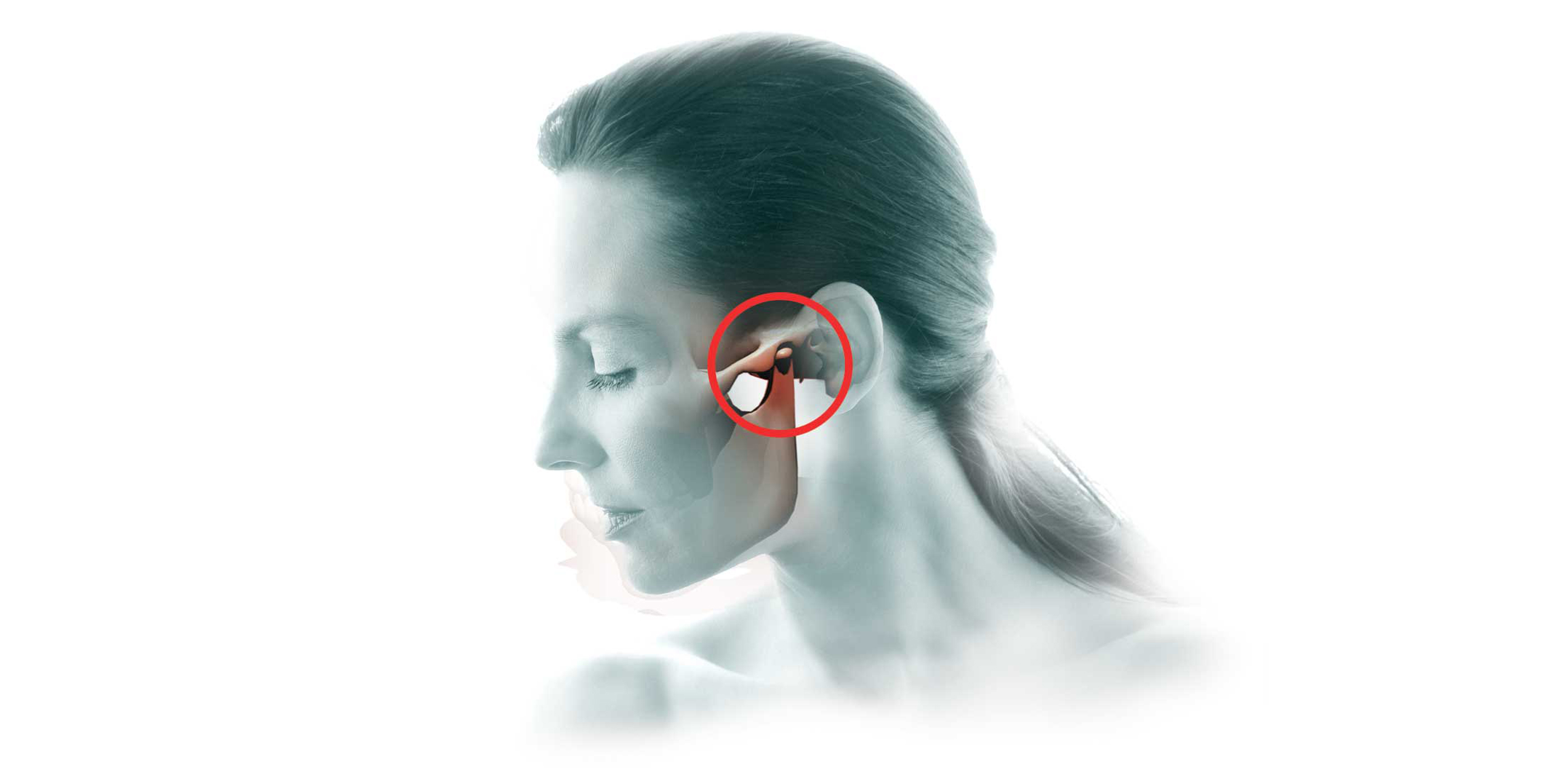
- Arthrotomy: Open joint surgery to repair or replace joint components
- Total joint replacement: In extreme cases of joint degeneration
What is the success rate of TMJ treatments? The effectiveness of TMD treatments can vary widely depending on the specific condition and individual factors. Many patients experience significant improvement with conservative treatments, while others may require more intensive interventions. It’s essential to work closely with your healthcare provider to develop a personalized treatment plan.
Living with TMJ Disorders: Self-Care and Management Strategies
While professional treatment is often necessary for managing TMDs, there are several self-care strategies that can help alleviate symptoms and improve overall jaw health:
Lifestyle Modifications
- Practice good posture to reduce strain on the jaw and neck
- Avoid excessive jaw movements, such as wide yawning or aggressive gum chewing
- Use proper ergonomics when working or studying to minimize neck and jaw tension
- Get adequate sleep and maintain a consistent sleep schedule
Stress Management
Since stress can exacerbate TMD symptoms, implementing stress-reduction techniques can be beneficial:

- Practice mindfulness meditation or deep breathing exercises
- Engage in regular physical activity
- Consider cognitive-behavioral therapy to develop coping strategies
- Explore relaxation techniques like progressive muscle relaxation or guided imagery
Dietary Considerations
Modifying your diet can help reduce strain on the TMJ:
- Choose softer foods that require less chewing
- Cut food into smaller pieces
- Avoid sticky or chewy foods that may aggravate the jaw
- Stay hydrated to maintain good joint lubrication
Home Remedies
Simple home remedies can provide relief from TMD symptoms:
- Apply moist heat or ice packs to the jaw area
- Gently massage the jaw and temple muscles
- Practice jaw exercises as recommended by your healthcare provider
- Use over-the-counter pain relievers as directed
How can you prevent TMJ disorders from worsening? While not all TMDs can be prevented, maintaining good oral habits, managing stress, and addressing symptoms early can help prevent the condition from progressing. Regular dental check-ups and early intervention when symptoms arise are key to managing TMJ health.
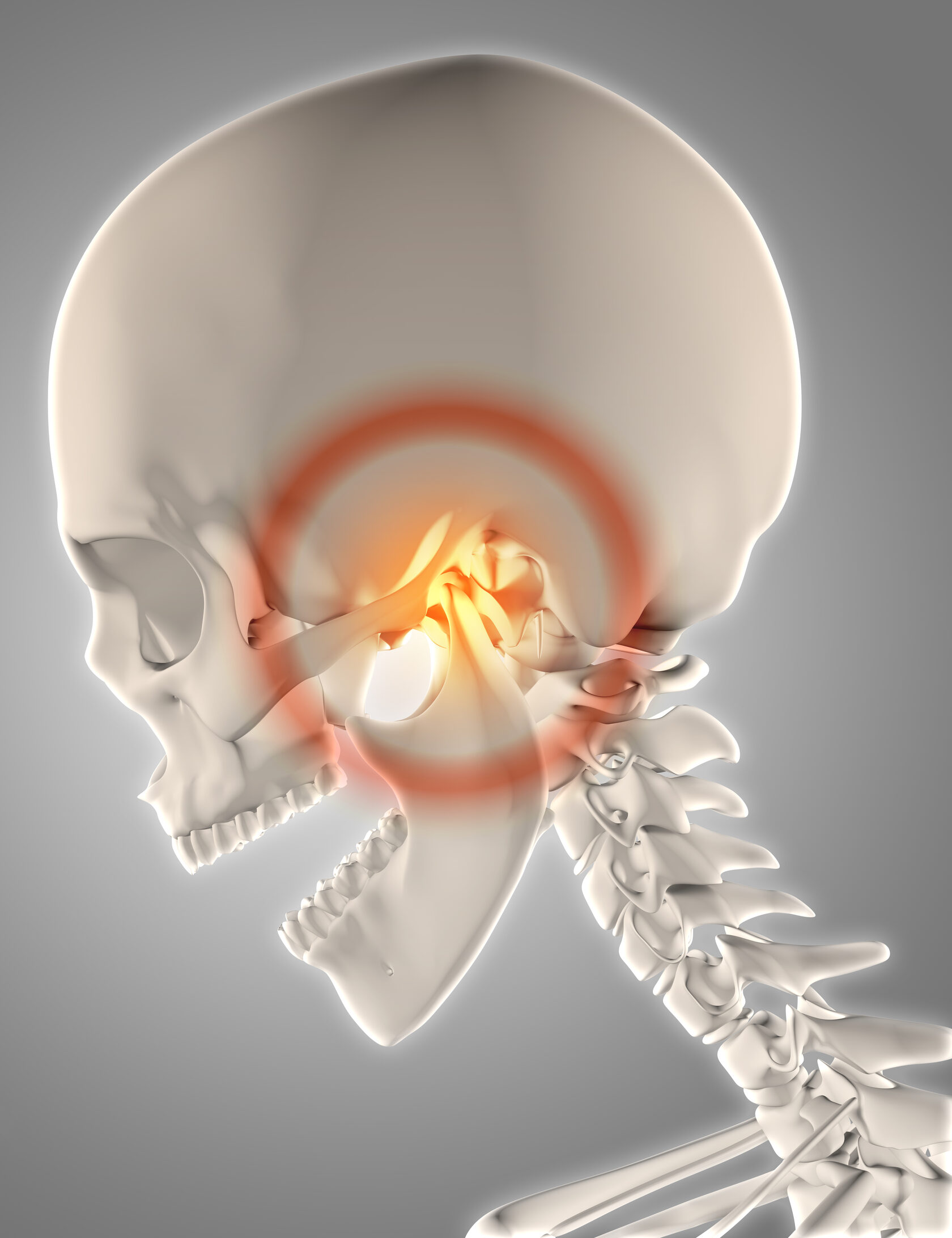
The Future of TMJ Disorder Research and Treatment
As our understanding of temporomandibular disorders continues to evolve, researchers are exploring new avenues for diagnosis, treatment, and prevention. Some promising areas of research include:
Genetic Studies
Scientists are investigating genetic factors that may predispose individuals to TMDs. This research could lead to more personalized treatment approaches and early intervention strategies for those at higher risk.
Advanced Imaging Techniques
Improvements in imaging technology, such as high-resolution MRI and 3D imaging, may allow for more accurate diagnosis and treatment planning for TMDs.
Biomarkers
Researchers are exploring the potential of using biomarkers in blood or saliva to diagnose TMDs and monitor treatment progress more objectively.
Regenerative Medicine
Stem cell therapy and tissue engineering techniques show promise for repairing damaged joint tissues and potentially reversing TMJ degeneration.
Targeted Drug Delivery
New methods of delivering medications directly to the TMJ could provide more effective pain relief with fewer side effects.

What advancements can we expect in TMJ treatment in the coming years? While it’s difficult to predict specific breakthroughs, the growing focus on TMD research suggests that we may see more personalized, effective, and less invasive treatment options in the future. Continued collaboration between dental, medical, and research communities will be crucial in advancing our understanding and management of these complex disorders.
In conclusion, temporomandibular joint disorders represent a diverse group of conditions that can significantly impact an individual’s quality of life. While challenges remain in diagnosis and treatment, ongoing research and a multidisciplinary approach offer hope for improved outcomes. By understanding the complexities of TMDs and staying informed about current management strategies, individuals can work effectively with healthcare providers to find relief and maintain optimal jaw health.
TMD (Temporomandibular Disorders) | National Institute of Dental and Craniofacial Research
On this page
- Overview
- Causes
- Symptoms
- Diagnosis
- Treatment
- Helpful Tips
- Additional Resources
Back to top
Overview
Healthy temporomandibular joint during mouth opening & closing.
Temporomandibular disorders (TMDs) are a group of more than 30 conditions that cause pain and dysfunction in the jaw joint and muscles that control jaw movement. “TMDs” refers to the disorders, and “TMJ” refers only to the temporomandibular joint itself. People have two TMJs; one on each side of the jaw. You can feel them by placing your fingers in front of your ears and opening your mouth.
People have two TMJs; one on each side of the jaw. You can feel them by placing your fingers in front of your ears and opening your mouth.
There are three main classes of TMDs:
- Disorders of the joints, including disc disorders.
- Disorders of the muscles used for chewing (masticatory muscles).
- Headaches associated with a TMD.
There are several disorders within each class. See diagram below for some examples.
Classification of Temporomandibular Disorders (TMDs) with Examples
Text Alternative
*A person may have one or more of these conditions at the same time.
Many TMDs last only a short time and go away on their own. However, in some cases they can become chronic, or long lasting. In addition, TMDs can occur alone or at the same time as other medical conditions such as headaches, back pain, sleep problems, fibromyalgia, and irritable bowel syndrome.
A recent study found that about 11-12 million adults in the United States had pain in the region of the temporomandibular joint.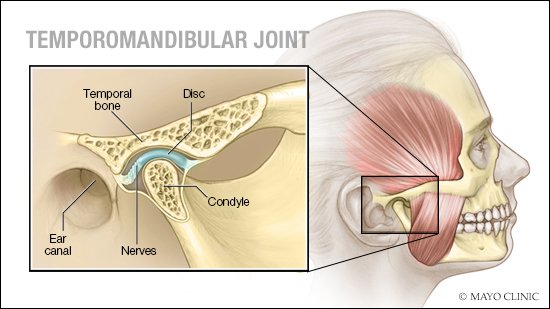
Temporomandibular disorders are twice as common in women than in men, especially in women between 35 and 44 years old.
Back to top
Causes
Injury to the jaw or temporomandibular joint can lead to some TMDs, but in most cases, the exact cause is not clear. For many people, symptoms seem to start without obvious reason. Recent research suggests a combination of genes, psychological and life stressors, and how someone perceives pain, may play a part in why a TMD starts and whether it will be long lasting.
Because TMDs are more common in women than in men, researchers are exploring whether the differences in TMJ structure and mechanics between females and males may play a role.
Research does not support the belief that a bad bite or orthodontic braces cause TMDs.
Back to top
Symptoms
It is important to know that sounds (such as clicking or popping) without pain in the TMJs are common, are considered normal, and don’t need treatment.
However, the following symptoms may signal a TMD:
- Pain in the chewing muscles and/or jaw joint (most common symptom).
- Pain that spreads to the face or neck.
- Jaw stiffness.
- Limited movement or locking of the jaw.
- Painful clicking, popping, or grating in the jaw joint when opening or closing the mouth.
- Ringing in the ears, hearing loss, or dizziness.
- A change in the way the upper and lower teeth fit together.
Back to top
Diagnosis
There is no widely accepted, standard test available to diagnose TMDs. Because the exact causes and symptoms are not clear, identifying these disorders can be difficult.
Your doctor or dentist will note your symptoms and take a detailed medical history. He or she will ask questions about your pain, including its location, when it occurs, what makes it better or worse, and if it stays in one area or spreads to other parts of your body. The doctor or dentist will also ask if you have other pain conditions such as headache or back pain.
He or she also will examine your head, neck, face, and jaw for tenderness; jaw clicking or popping; or difficulty with movement. The doctor or dentist might also suggest imaging studies such as an x-ray, magnetic resonance imaging (MRI), or computed tomography (CT).
Pain in the mouth, jaw, or face may or may not be related to TMDs. Your doctor or dentist may have to rule out other conditions before diagnosing a TMD.
Back to top
Treatment
Before receiving treatment for TMDs, you should know:
- Sounds without pain in the temporomandibular joints are normal, happen frequently, and do not need treatment.
- Signs and symptoms of TMD go away in many people without treatment.
- Because evidence is lacking for the majority of TMD treatments, experts strongly recommend staying away from treatments that cause permanent changes to the jaw joints, teeth, or bite; or that involve surgery.
Nonsurgical Treatments
Because many jaw joint and muscle problems are temporary and do not get worse, simple treatment may be all that is necessary.
When you first feel discomfort in your jaw joints or muscles, your doctor or dentist may have you:
- Eat soft foods.
- Apply heat or cold to the face in combination with exercises to gently stretch and strengthen the jaw muscles.
- Take over-the-counter medications, for example nonsteroidal anti-inflammatory drugs (NSAIDs), like ibuprofen.
- Reduce habits such as jaw clenching, gum chewing, or nail biting.
If these steps do not help, or if in the process of trying them your doctor/dentist diagnoses a specific type of TMD, one or more of the following treatments may be recommended.
Physical Therapy
The goal of physical therapy is to maintain, improve, or bring back movement and physical function. There are several types of physical therapy. One type is manual therapy, in which a therapist uses his/her hands to stretch the soft tissues and muscles around the joint. Manual therapy has been shown to help improve function and relieve pain.
Self-management and Behavioral Health Approaches
Self-management refers to activities you can do yourself and include:
- Learn all you can about your specific type(s) of TMD.
- Learn meditation & relaxation techniques.
- Set specific goals related to managing your condition.
- Stay involved in activities that are meaningful to you.
Certain behavioral health approaches, usually offered by a psychologist, have been shown to help manage TMDs. These include cognitive behavioral therapy and biofeedback.
Cognitive behavioral therapy seeks to identify negative thoughts or thought patterns and change them, as well as provide coping skills.
Biofeedback involves using sensors that monitor breathing, heart rate, muscle contraction, and temperature. For example, a sensor on your jaw can detect when you tighten your jaw muscles. With the help of a therapist, you can learn to notice the unwanted behavior and relax.
Medications
Your doctor or dentist may recommend medication(s) to treat your symptoms.
These include:
- Over-the-counter medications such as:
- Nonsteroidal anti-inflammatory drugs (NSAIDs), used to treat pain.
- Prescription medications such as:
- Antianxiety medications.
- Antidepressants.
- Antiseizure medications.
- Opioids.
Some of these medications can lead to addiction or have other serious side effects. If you are prescribed any of these medications, make sure your doctor or dentist explains how to take them and for how long.
Intraoral Appliances
Intraoral appliances are devices that fit over the teeth. They do not change the teeth or bite. They are also known as nightguards, splints, stabilization appliances, occlusal splints, interocclusal splints, or bruxism splints.
There is not a lot of evidence they improve TMD pain. If a dentist or doctor suggests you use one:
- Make sure it is not designed to permanently change your bite.

- Stop using it and consult your dentist/doctor if it causes pain.
Complementary Treatments
A complementary treatment is a non-mainstream practice used together with conventional medicine. Acupuncture and transcutaneous electrical nerve stimulation (TENS) are two complementary treatments that have been studied for TMDs.
Acupuncture is a technique in which practitioners stimulate specific points on the body—most often by inserting thin needles through the skin. There is limited evidence that it helps TMDs.
TENS is a battery-powered device that uses electrodes placed on the skin. The device creates electrical impulses that may change how pain is perceived. Although some studies have shown that TENS may help relieve pain in TMDs and improve the ability to open the mouth, the studies were small with short-duration TENS treatments.
Surgery and Other Medical & Dental Procedures
The treatments discussed in this section are more complex, involve going into the chewing muscles or the temporomandibular joints (with a needle or other instrument), or changing your bite and teeth.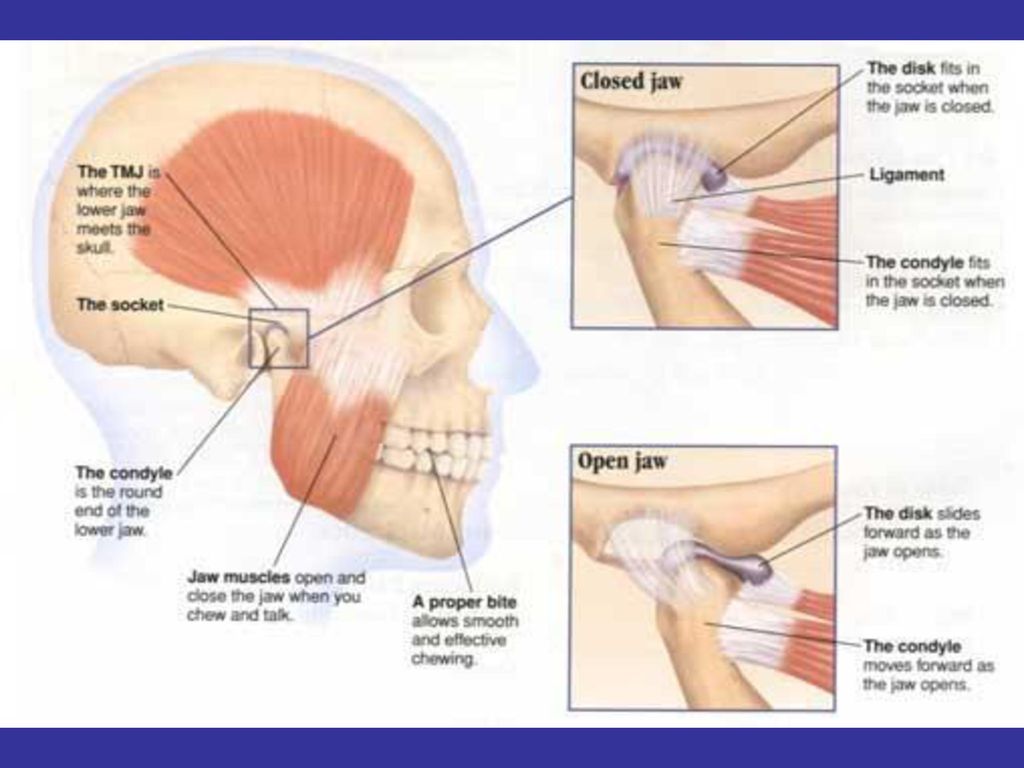 More importantly, some of them – like occlusal treatments (see below)— don’t work and may make the problem worse. Before having any of these procedures:
More importantly, some of them – like occlusal treatments (see below)— don’t work and may make the problem worse. Before having any of these procedures:
- Ask about simpler treatments and try those first.
- Ask the doctor or dentist to explain the procedure—in detail—in a way you can understand.
- Ask how the procedure will help improve your specific TMD.
- Ask about the risks.
- Get second opinions from qualified medical or dental specialists.
Occlusal Treatments
Occlusion refers to how teeth fit together. For years it was thought that misaligned teeth (malocclusion) were a cause of TMDs; however, there is no evidence to support this belief. Occlusal treatments modify the teeth and bite. Examples include:
- Placing crowns on the teeth.
- Grinding down the teeth.
- Using orthodontic treatment(s) to change the position of some or all teeth.
There is no evidence these occlusal treatments work, and they could make the problem worse.
Botulinum Toxin
Botulinum toxin Type A works by relaxing muscles. It is FDA-approved for some medical conditions (like migraines) but not for TMDs. Studies have looked at injecting botulinum toxin Type A into the chewing muscles to reduce muscle spasm and pain. However, the information from these studies is limited and it is not clear whether this medication works to relieve TMD symptoms.
Prolotherapy
Prolotherapy involves injecting a solution into the TMJ area that causes irritation, with the goal of triggering the body to respond by repairing the joint. Prolotherapy has shown promise specifically for TMDs in which the joint is out of its normal position (dislocation) or when the joint goes beyond its normal range of movement (hypermobility). However, there have been only a few small studies on this treatment for TMDs.
Arthrocentesis
In this procedure a needle is used to push liquid into the TMJ. The pressure caused by the liquid removes scar-like tissue (adhesions). In addition, when the liquid is flushed out of the joint, it removes substances that cause inflammation. Arthrocentesis has been shown to help with pain relief and improve mouth opening in people whose temporomandibular disc is out of place; however, these effects do not last long.
The pressure caused by the liquid removes scar-like tissue (adhesions). In addition, when the liquid is flushed out of the joint, it removes substances that cause inflammation. Arthrocentesis has been shown to help with pain relief and improve mouth opening in people whose temporomandibular disc is out of place; however, these effects do not last long.
Arthroscopy
During arthroscopy the doctor inserts an instrument with a tiny video camera into the jaw joint. The doctor can see the joint, which can help in diagnosis. He or she can also remove adhesions or reposition the joint’s disc. This procedure works moderately well in helping improve pain and function.
Surgery
Open surgery gives access to the temporomandibular joint through a cut (incision) next to the ear. It’s important to know that surgery makes permanent changes to your joint. There are no long-term research studies on the safety of open surgery for TMDs or on how well it works to relieve symptoms.
Surgery should only be considered if:
- There is destruction of the joint that cannot be fixed with other procedures.
- There are severe symptoms (pain and/or difficulty opening the mouth), despite trying other treatments.
If your healthcare provider suggests surgery, be sure to ask:
- Why are you suggesting surgery?
- Are there other options besides surgery?
- How will it help me?
- What are the risks?
TMJ Implants
Implants are artificial devices that are used to replace part of the jaw joint or the entire joint. There are currently three TMJ implants approved by the FDA.
Implants might be considered when:
- There is an injury to the joint.
- There is a condition you’re born with (congenital condition) that needs to be repaired.
- The joint is frozen (ankylosis), commonly caused by injury or infection.
- There’s severe damage to the joint.
- There’s ongoing pain.

- All simpler treatments have been tried and have failed.
Some studies suggest that, when used in very specific cases, TMJ implants can improve function and quality of life. As with any surgery, proceed with caution.
Implants used many years ago (and since taken off the market), did not help patients and left them with severe complications, including permanent damage to the jaw joint(s). Because of this, researchers have called for long-term studies to look at the safety and efficacy of the newer TMJ implants.
Remember: Before any surgery, including implant surgery, it is extremely important to get opinions from more than one doctor and to completely understand the risks. If possible, seek an opinion from a surgeon who specializes in treating TMDs.
Summary of Treatments for Temporomandibular Disorders (TMDs)
Text Alternative
Back to top
Helpful Tips
If you think you have a TMD or are diagnosed with one:
- Start with simple treatments first; remember that TMD symptoms often go away on their own, without treatment.

- Consult a dentist or doctor.
- Learn all you can about the TMD you have.
- Avoid (when possible) treatments that involve going into or permanently changing the jaw joints, especially surgery or TMJ implants.
- Understand all the risks when considering surgery or other medical or dental procedures that result in permanent change and seek an opinion from an orofacial pain clinic at a medical or dental school, if possible.
Back to top
Additional Resources
- MedlinePlus: Temporomandibular Joint Dysfunction
The NIH National Library of Medicine’s collection of links to government, professional, and non-profit/voluntary organizations with information on temporomandibular disorders. - The TMJ Association
The TMJ Association is a non-profit, patient advocacy organization whose mission is to improve the quality of health care and the lives of everyone affected by temporomandibular disorders. - American Chronic Pain Association
The ACPA offers peer support and education in pain management skills to people with pain, their family and friends, and health care professionals.
Back to top
TMJ Disorders – Causes, Signs & Symptoms, Treatment Options | Derby Orthodontics
If you experience ongoing pain in the area near your ear, your jaw or the muscles on the side of your face, possibly accompanied by a clicking or popping sound or restricted jaw movement, you may be suffering from TMD — an abbreviation for Temporomandibular disorders. Sometimes people incorrectly use the term TMJ to refer to these problems, when in fact TMJ is the abbreviation for the temporomandibular joint — or jaw joint — itself. So while you definitely have a TMJ (two of them in fact), you may or may not have TMD.
TMD, then, describes a group of conditions characterized by pain and dysfunction of the TMJ and/or the muscles surrounding it. It’s not always so easy to figure out exactly what’s causing these symptoms, but the good news is that most TMD cases resolve themselves with the help of conservative remedies we will recommend for you to do at home. In fact, it’s important to exhaust all such reversible remedies before moving on to anything irreversible, such as bridgework or surgery.
The two TMJs that connect your lower jaw, the mandible, to the temporal bone of the skull on either side, are actually very complex joints that allow movement in three dimensions. The lower jaw and temporal bone fit together as a ball and socket, with a cushioning disk in between. Large pairs of muscles in the cheeks and temples move the lower jaw. Any of these parts — the disk, the muscles or the joint itself — can become the source of a TMD problem. If you are in pain, or are having difficulty opening or closing your jaw, we will do a thorough examination to try to pinpoint the problem area and suggest appropriate remedies.
Causes of TMD
As with any other joint, the TMJ can be subject to orthopedic problems including inflammation, sore muscles, strained tendons and ligaments, and disk problems. We also know that TMD is influenced by genes, gender (women appear to be more prone to it), and age. Physical and psychological stress can also be a factor. In some cases, jaw pain may be related to a more widespread, pain-inducing medical condition such as fibromyalgia (“fibro” – connective tissues; “myo” – muscle; “algia” – pain).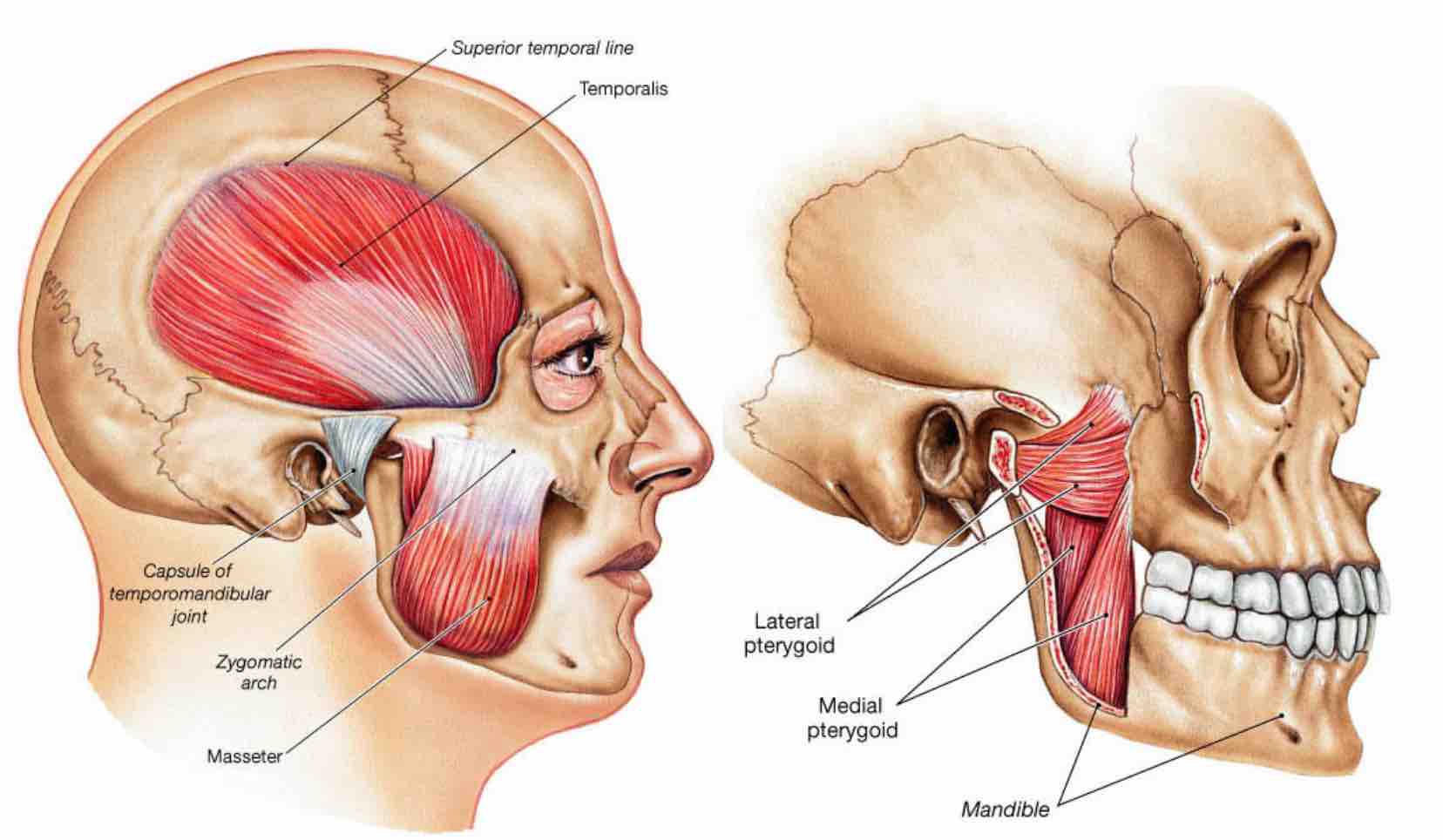
Signs and Symptoms of TMD
Clicking Sounds — Some people with TMD hear a clicking, popping or grating sound coming from the TMJ when opening or closing the mouth. This is usually caused by a shifting of the disk inside the joint. Someone standing next to you might even be able to hear it. Clicking by itself is actually not a significant symptom because one third of all people have jaw joints that click, studies show. However, if the clicking is accompanied by pain or limited jaw function — the jaw getting “stuck” in an open or closed position, for example — this would indicate TMD.
Muscle Pain — This can be felt in the cheeks (masseter muscles) and temples (temporalis muscles), where the two big pairs of jaw-closing muscles are located. If you feel soreness and stiffness upon waking up in the morning, it’s often related to habits such as clenching and/or grinding the teeth at night. If you have this type of nocturnal habit, we can have a nightguard custom-made for you that should be very helpful in decreasing the force applied to your teeth, which will in turn allow your muscles to relax and relieve pressure on your jaw joints.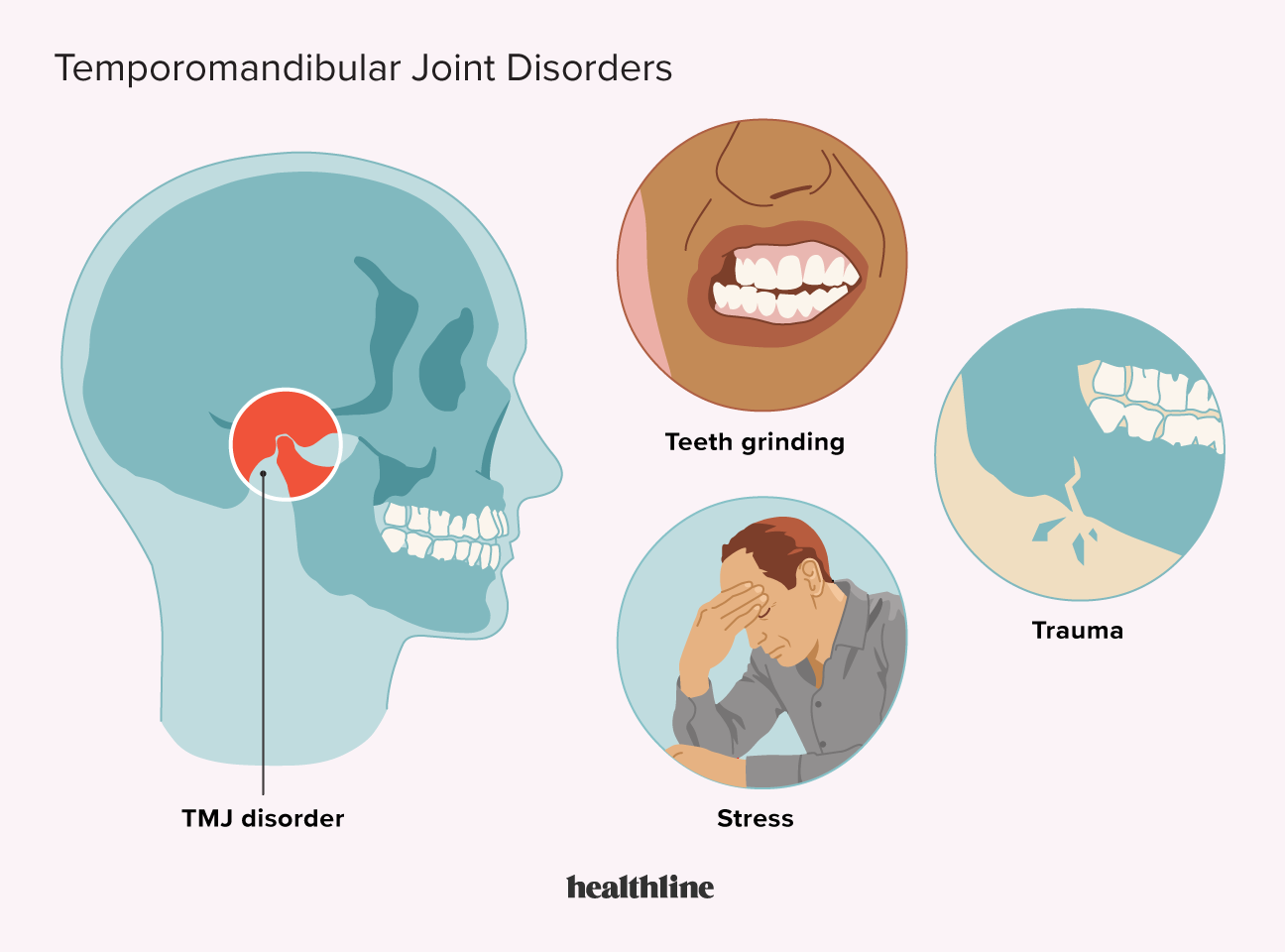 Other self-care remedies are discussed below (please see Relieving the Pain).
Other self-care remedies are discussed below (please see Relieving the Pain).
Joint Pain — Pain that’s actually coming from one or both jaw joints technically would be described as arthritis (“arth” – joint; “itis” – inflammation) of the TMJ. When we look at radiographs (x-ray pictures) we find that some people have arthritic-looking TMJs but no symptoms of pain or dysfunction; others have significant symptoms of pain and dysfunction but their joints look normal on radiographs. There is no cure for arthritis anywhere in the body, but medication can sometimes help relieve arthritic symptoms.
Relieving the Pain
Once we examine you, we will come up with a strategy for treating your condition and managing your pain. Sometimes a temporary change to a softer diet can reduce stress on the muscles and joints. Ice and/or moist heat can help relieve soreness and inflammation. Muscles in spasm can also be helped with gentle stretching exercises. Non-steroidal anti-inflammatory medications and muscle relaxants can also provide relief.
Other Treatment Options
Severe TMD cases may require more complex forms of treatment, which might include orthodontics, dental restorations like bridgework, or minor procedures inside the joint such as cortisone injections or lavage (flushing) of the joint. It’s rare for major surgery ever to be necessary in a case of TMD. Again, it’s important to try the wide range of conservative, reversible treatments available, and give them enough time to work as they almost always prove effective. The first step is an examination here at our dental office. We don’t want you to be in pain, so please come in and see us. To learn more about the treatment options available, view our Chart on TMD Therapy
Related Articles
TMD – The Great Impostor
This “chameleon” of dental disorders manifests in a variety of ways, including joint pain, sinusitus, ear pain, tooth and headaches. Dear Doctor magazine examines the causes of TMD, its signs and symptoms and what can be done to treat this common disorder. .. Read Article
.. Read Article
Seeking Relief From TMD
TMD, or Temporomandibular Disorders, is an umbrella term for various painful conditions that affect the jaw joints. There are different treatment approaches to TMD problems, but not all are based on science. It’s important to be up on the latest information and to be an educated consumer. In this comprehensive article, Dear Doctor magazine provides state-of-the-art information and guidance on what you should know, whom you should see, and what you should ask… Read Article
Temporomandibular joint dysfunction (TMJ)
The temporomandibular joint is a paired organ that connects the lower jaw to the base of the skull. As you know, the lower jaw is the only movable bone that is capable of performing complex movements of the jaw in space. The most simple and understandable movements are opening and closing the mouth (up / down). But, we also know how to move the jaw to the right to the left, back and forth and an infinite number of combinations, when the movements occur simultaneously in all directions of the three-dimensional coordinate system. The movement vector is set by four pairs of the main masticatory muscles: masteterial (right and left), temporal (right and left), medial pterygoid and lateral pterygoid muscles of the right and left sides. Thanks to them, we open and close our mouths, bite and chew food, swallow, make sounds when talking, play musical instruments, bite our nails, bite walnuts, open beer bottles, kiss and much more. The jaw joint provides the possibility of such movements, while maintaining a strong and stable connection between the lower jaw (M/N) and the fixed bones of the entire skull.
But, we also know how to move the jaw to the right to the left, back and forth and an infinite number of combinations, when the movements occur simultaneously in all directions of the three-dimensional coordinate system. The movement vector is set by four pairs of the main masticatory muscles: masteterial (right and left), temporal (right and left), medial pterygoid and lateral pterygoid muscles of the right and left sides. Thanks to them, we open and close our mouths, bite and chew food, swallow, make sounds when talking, play musical instruments, bite our nails, bite walnuts, open beer bottles, kiss and much more. The jaw joint provides the possibility of such movements, while maintaining a strong and stable connection between the lower jaw (M/N) and the fixed bones of the entire skull.
Anatomy of the jaw joint
Describing the detailed anatomy of a joint in the format of a popular presentation is not so easy. We will try to do this without going into details, but by addressing important defining questions.
The articular part of the lower jaw is called the condyle. The condyle articulates with the articular fossa. The surfaces of these formations are incongruent and the sliding of the condyle along the surface of the fossa would be impossible if it were not for the intraarticular disc, which is a cartilaginous lining. Its upper surface is adapted to the shape of the fossa, while the lower surface is adapted to the shape of the condyle. This property eliminates incongruity.
When opening the mouth, the condyle (pos. 4), and with it the entire lower jaw, performs two types of movement:
- translational movement from the hole (pos.1) to the top of the hillock (pos.2)
- rotational movement (counterclockwise. arrows).
Simultaneously with the movement of the condyle, the articular disc also moves (pos. 3). And this is one of the easiest movements to describe. Many movements are much more complex and intricate.
In order for the joint to work in a normal mode, it is necessary to coordinate the work of all masticatory muscles, ligaments firmly attached to the condyle and the ligamentous apparatus holding the intraarticular disc.
What does TMJ dysfunction mean?
Any discoordination of the work of the elements of the joint is called dysfunction. The more pronounced violations of the interaction, the rougher the symptoms of arthritis or arthrosis coming in response to dysfunction.
The initial signs may be slight pain and appearing noises, clicks, crackling and crunching with various movements of the lower jaw.
As problems worsen, the abnormal sounds increase and the free and smooth movement of the mandible is disturbed. The opening of the mouth may occur unevenly, with a shift to the side or in a zigzag pattern. Pain can increase in intensity and capture or radiate to neighboring areas. Sometimes people report general headaches.
In difficult cases, mouth opening is drastically reduced and patients cannot chew food.
Causes of dysfunction of the jaw joint
The causes of joint dysfunction in the global sense are overloads. These may be short-term exposures or the result of chronic fatigue accumulated over a long period of time.
Short-term stress is sometimes referred to as acute injury. For example, hit. As a result of injury, ruptures and sprains of the ligaments occur, after which some muscles will be in hypertonicity, and the ligamentous apparatus will be unable to hold the elements in the correct ratio in relation to each other.
Many patients suffer from bruxism, which is certainly a chronic injury to the TMJ. Hypertonicity of the masticatory muscles and keeping the jaws in the position of closed teeth leads to overloading of the joint elements, impaired blood circulation, and compression of the intraarticular disc.
Can teeth cause dysfunction? Yes, the condition of the teeth and the nature of the bite also affect the condition and functioning of the jaw joint. So the bruxism described by us in a few years will lead to pathological abrasion of the teeth. Reducing the height of the teeth will lead to a change in the intermaxillary distance (the height of the lower third of the face decreases), and this leads to an increase in the load on the articular surfaces.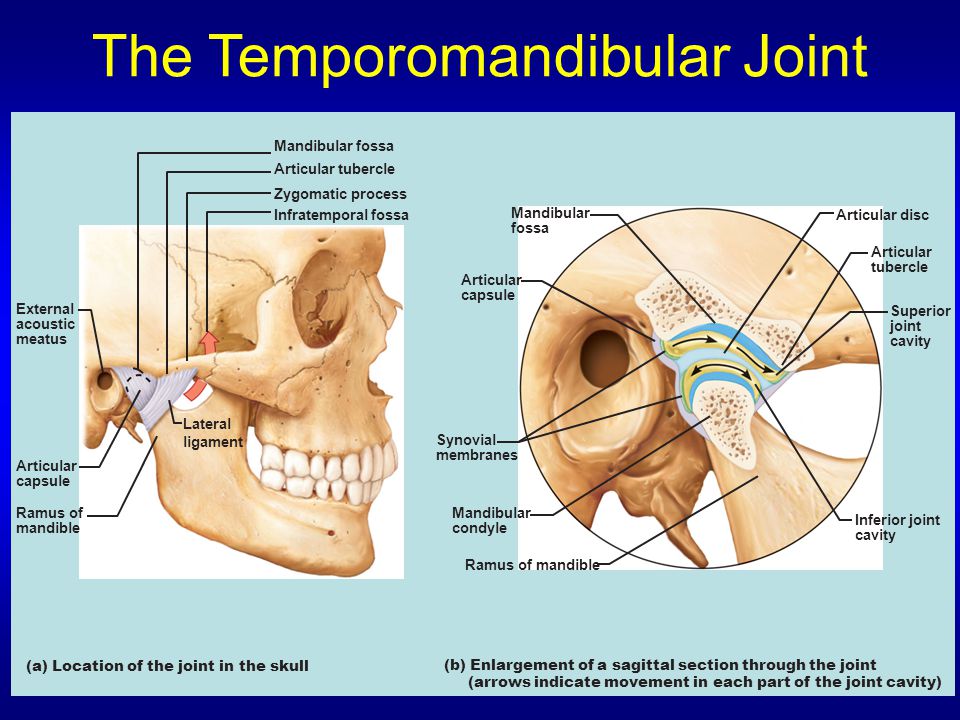
Do braces and orthodontic treatment prevent jaw disease?
Braces can prevent TMJ problems (be preventive), it really is. So the task of orthodontic treatment is the formation of such a type of bite, when any movement in the joint will be protected by correct, functional occlusion. This means that with any chewing movements of the lower jaw, the teeth must be guiding and determining for the trajectory of the glide of the articular process. The joint is limited from complete freedom of movement, which prevents overloading of its structures.
Let’s take a simple example of the sagittal movements of the lower jaw. In the case of sliding the dentition back and forth (imitating the final part of biting off food), the movements of the joint will be synchronized with the sagittal incisal path of reference (the trajectory of contact of the lower incisors with the palatal surface of the upper incisors).
If the shape of the slope of the articular tubercle (on which the condyle and articular disc slide) and the palatal surface of the upper incisors (on which the lower incisors slide) are not synchronized, then either the joint will receive excessive loads or the teeth will collapse from excessive pressure.
Similarly, the joint must be protected from overload during lateral masticatory movements. Lateral displacements in the joint must also be protected: When moving to the right, the canines of the working side should provide the right canine path, while moving to the left, the left canine path works.
Braces cause joint problems
But in life there are so-called iatrogenic diseases, when the doctor or the treatment prescribed by him was the cause of the problems. Unfortunately, braces can cause joint dysfunction. In orthodontics, a pathological distal occlusion is often found, due to the underdevelopment of the lower jaw. These are cases in which the chin appears to be underdeveloped and the entire lower jaw appears small or disproportionately receding.
In such cases it is necessary to increase the size of the mandible. But this is a difficult path and orthodontists are looking for ways to get around the complexity. Many choose the pernicious way of stretching the jaw forward, for greater beauty and harmony of the face.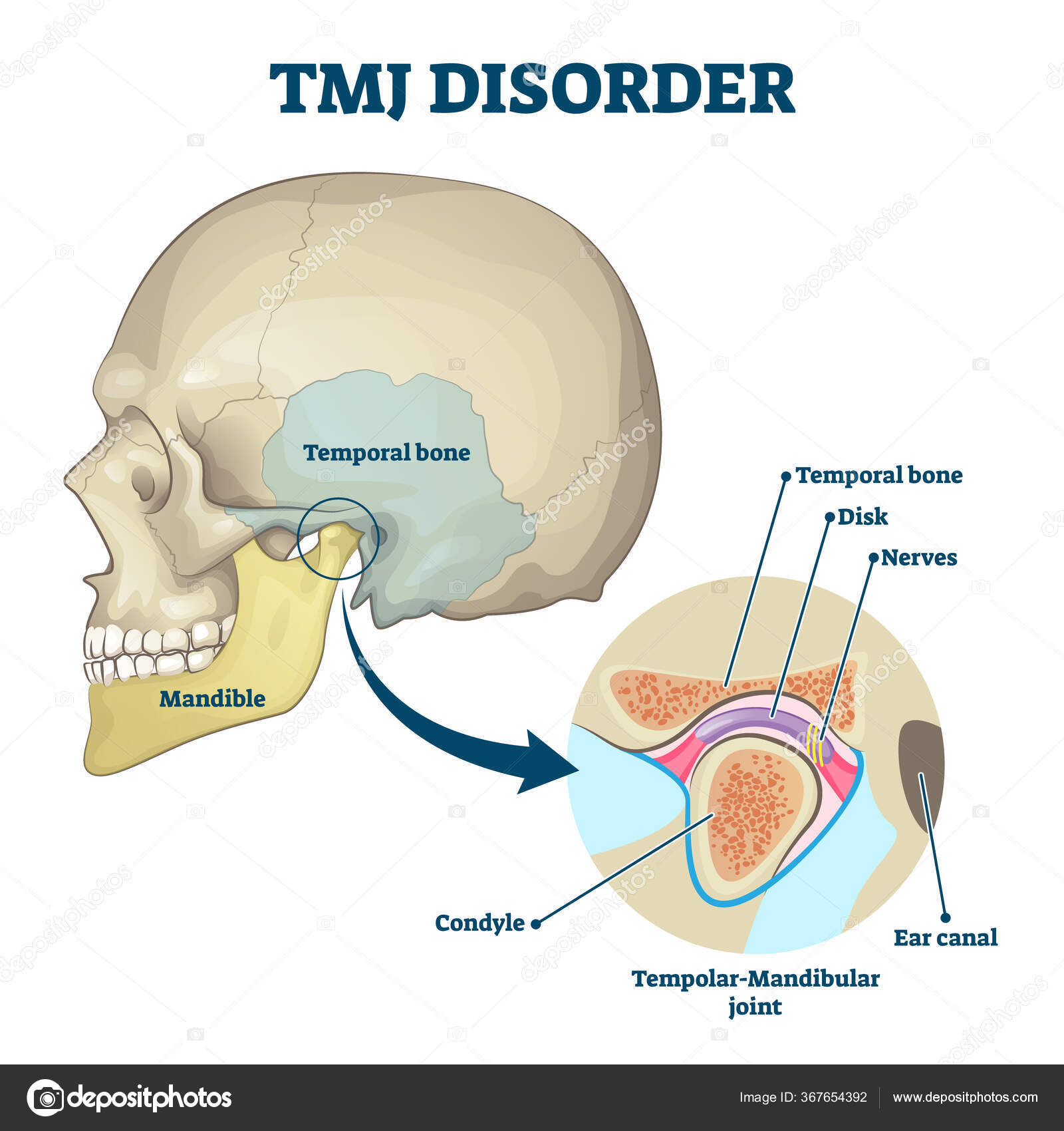 For this, Herbst devices, “Forsus bite corrector”, functional devices with an inclined plane of the Twin-block type are used.
For this, Herbst devices, “Forsus bite corrector”, functional devices with an inclined plane of the Twin-block type are used.
After using such techniques, the face really improves. But what happens to the joint? Normally, the articular head is in the middle of the articular fossa. But after such treatment, in quotation marks, the condylar process moves forward to the top of the tubercle. The new position is not functional, since the ratio of the elements of the joint is sharply disturbed: the ligaments are overstretched, the intraarticular disc is in an unstable position, unable to adapt the articular surfaces. Therefore, his movements are not systemic, not coordinated. If it shifts, slipping out from under the condyle, a click or crack occurs. This situation over time leads to the erasure of the articular disc, in severe cases to its perforation.
The general chain of pathological changes is changes in occlusion for the sake of dental signs of occlusion and improvement of facial proportions, resulting in severe joint damage.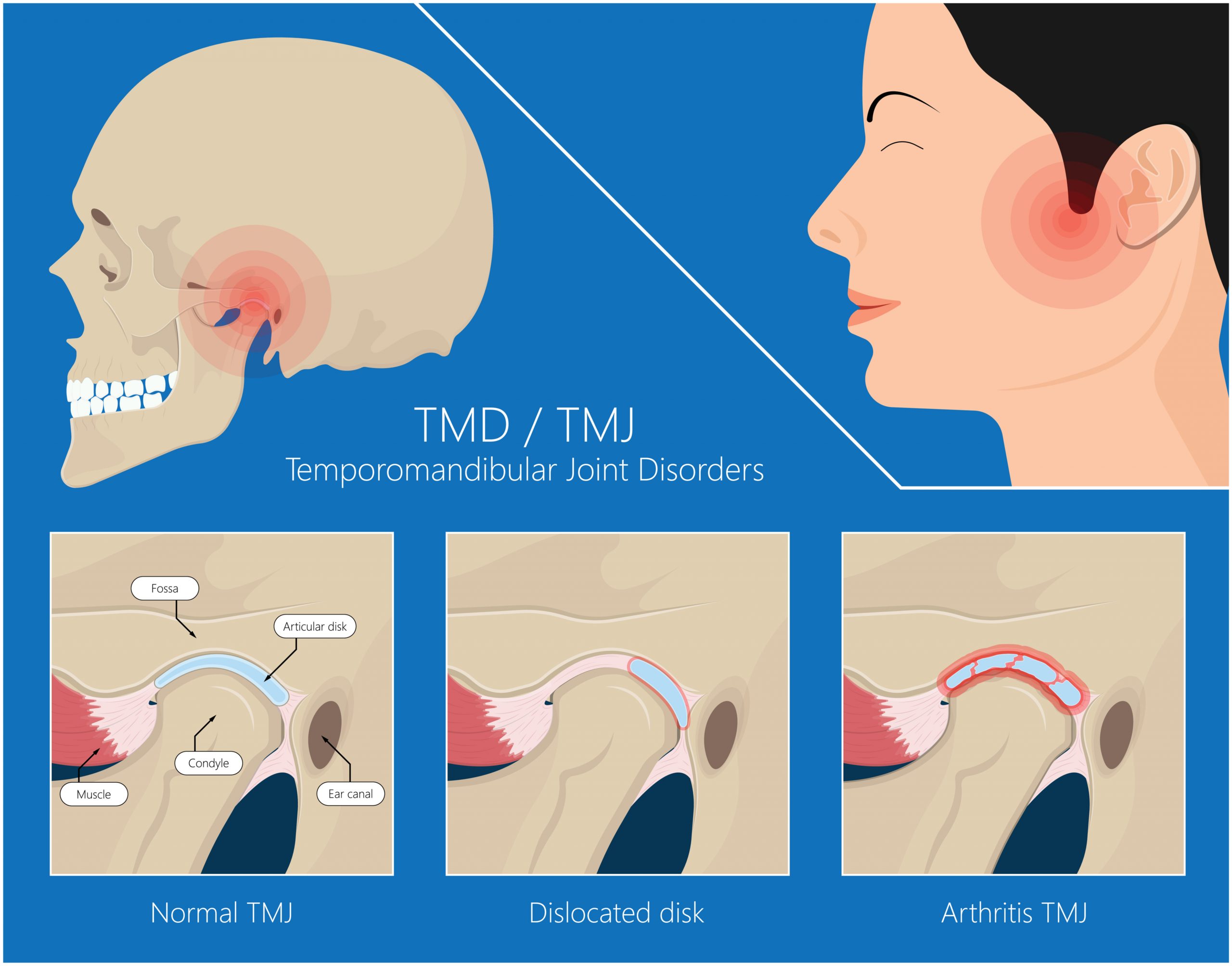
The ideal orthodontic treatment is also ambiguous for the temporomandibular joint
Gnathology is not an easy discipline, but we agreed to consider the problems of the joint at a popular level that is understandable to the common man. Here is one of the facts of the structure of the dentoalveolar system.
The sagittal incisal path is synchronized with the movement of the condylar process along the slope of the articular tubercle. Therefore, the depth of the incisal overlap correlates with the height of the articular tubercle.
In the case of a small incisal overlap, the articular tubercle is gentle and low
In the case of deep incisal overlap, the articular cusp is high and sheer.
It is this law of the structure of the dentoalveolar system that maintains the balance of forces, while maintaining the health of the joint and the integrity of the teeth. But how to be an orthodontist in each clinical case. After all, the final result of any treatment should be such that the depth of the incisal overlap is 2-3 mm.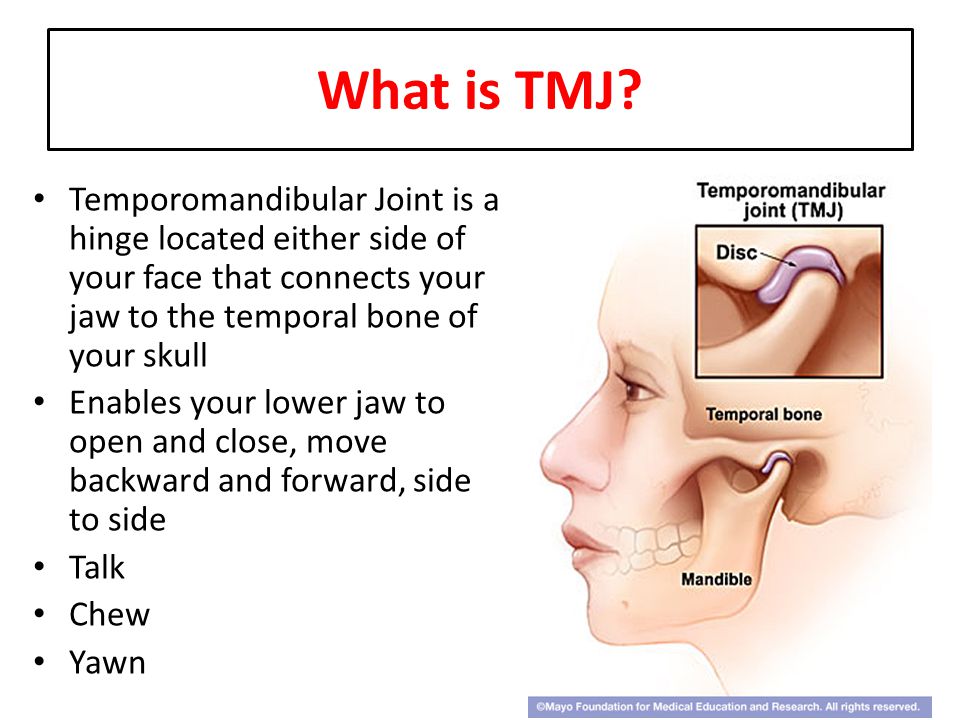 This means that the doctor is forced to neglect the structural features of the TMJ in order to meet the quality criteria.
This means that the doctor is forced to neglect the structural features of the TMJ in order to meet the quality criteria.
Improvement in dental symptoms indicates quality treatment. But now the coordination of the work of the TMJ is broken.
Treatment of TMJ dysfunction – diagnostics, methods and prices in Moscow
TMJ dysfunction – disruption of the temporomandibular joint, partial or complete loss of its functions. Accompanied by pain, restriction of movement of the jaws when opening the mouth, chewing, talking. It is difficult to treat due to the variety of symptoms and causes. In our Center, this complex problem is successfully solved by candidates of medical sciences , doctors with specialized training in gnatology and practical experience of 11 years.
TMJ dysfunction syndrome – what is it?
The temporomandibular joint (TMJ) connects the movable lower jaw and the fixed temporal bone of the upper jaw. There are two such joints – located on both sides of the skull in front of the ears. Each consists of a temporal fossa above and an articular head (mandible) below. Between them is the articular disc, which softens the friction of the articular surfaces during the movement of the lower jaw.
There are two such joints – located on both sides of the skull in front of the ears. Each consists of a temporal fossa above and an articular head (mandible) below. Between them is the articular disc, which softens the friction of the articular surfaces during the movement of the lower jaw.
The main assistants of the joints are the chewing muscles, which help to move the lower jaw relative to the upper one, as well as to keep it in the correct anatomical position, while easing the load on the joint.
The joints are quite mobile, they work synchronously, they provide:
- jaw movements, typical for conversation;
- movement of the jaw during chewing;
- maximum mouth opening, e.g. when yawning.
Normally, all elements of the system provide an easy, smooth, silent movement. But if there are changes in the articular surfaces and (or) the muscles that are attached to the joints, the whole system fails. There is a violation of the mobility of the joint or its dysfunction (one or two at once).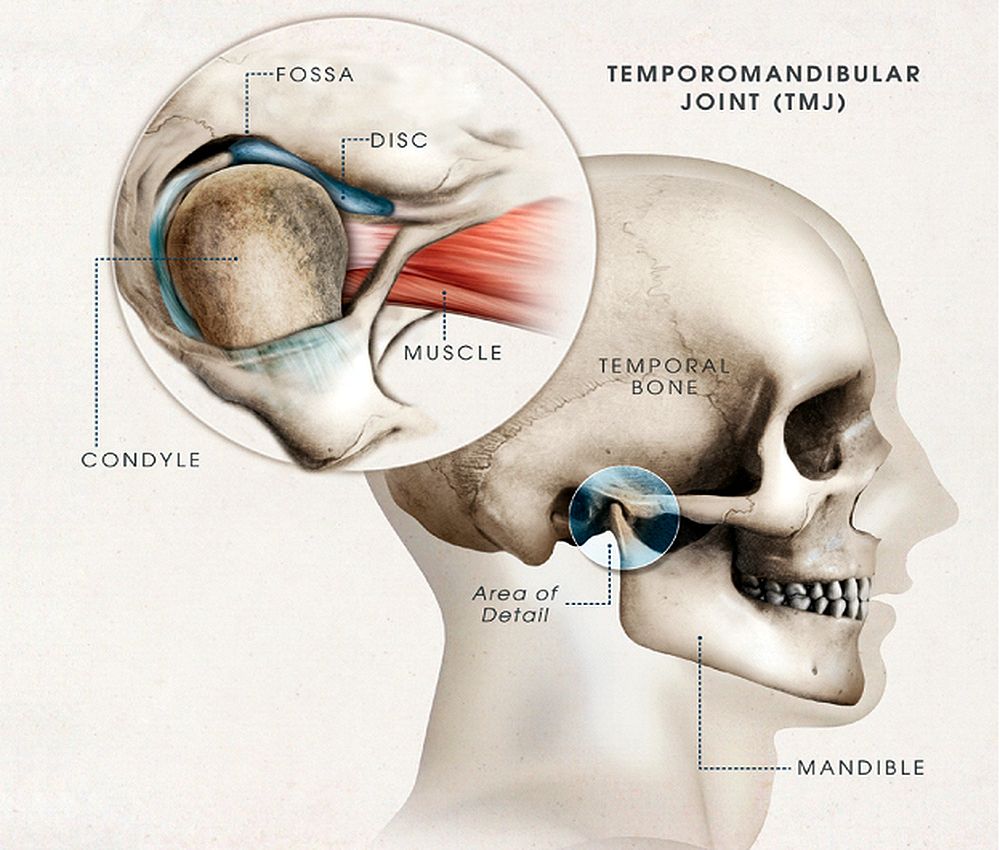
Causes of dysfunction of the temporomandibular joint
The main causes of TMJ dysfunction can be divided into several categories:
Dental
Lead to dysfunction of the joint due to physiologically incorrect closing of the jaws (occlusion) and their interaction in general:
- Injuries of the lower jaw
- Malocclusion
- Inadequate prosthetics
- Partial or total absence of teeth
Myogenic
Lead to increased stress on the joint and development of TMJ dysfunction in the jaw muscles (muscle dysfunction):
- Prolonged mechanical tension of facial muscles
- Hypertonicity of masticatory muscles due to bruxism
- Excessive muscle tension due to entrapment of the facial nerve
Diseases of the joint
Progressive pathologies affect the TMJ and impair its functions:
- Osteoarthritis
- Rheumatoid arthritis
- Inflammatory processes of the articular surface of infectious etiology
Anatomical factors
Increase the likelihood of TMJ dysfunction:
- Congenital anomalies of the structure of the lower jaw, pathologically low alveolar processes
- Anatomical discrepancy between the temporal fossa and the articular head, incorrect position of the disc at their articulation
Characteristic symptoms and signs
TMJ destruction is characterized by:
Pain tends to increase during speech, eating or yawning, when the range of motion of the lower jaw increases.
Symptoms characteristic of the manifestation of the destructive process in the joint may be pronounced or blurred. This is typical for a protracted chronic process. There are also likely periods of remission, followed by exacerbations – the symptoms can appear sharply against the background of emotional experiences.
Deterioration also occurs in general condition, :
Less typical symptoms should also be treated with caution :
Treatment of TMJ dysfunction must be immediate !
Due to the variety of symptoms and lack of understanding which doctor to contact, a person comes to a competent specialist with an advanced chronic form that accompanies him for many years and reduces the quality of life with debilitating manifestations. And without timely therapeutic measures, the onset of complete or partial ankylosis (immobilization of the jaw), which is difficult to treat, is possible.
Levin Dmitry Valerievich
Chief Physician and Founder of Doctor Levin
Who treats TMJ pain dysfunction and how?
The complexity of the situation is the lack of competent specialists in this field.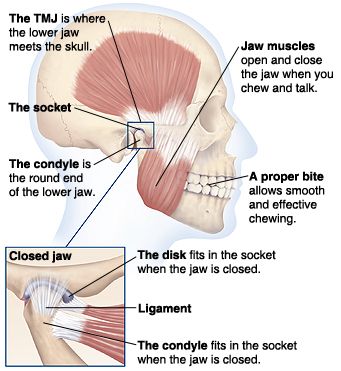 Disappointed patients often turn to our Center after a long walk through various clinics from one doctor to another, who already have a huge number of pictures and tests on their hands, but have not received the long-awaited relief.
Disappointed patients often turn to our Center after a long walk through various clinics from one doctor to another, who already have a huge number of pictures and tests on their hands, but have not received the long-awaited relief.
Few people know that degenerative processes in the joint of the lower jaw are treated by a gnathologist. Orthopedic dentists or orthodontists who have undergone special gnathological training can also be treated.
Help! Gnathology is a branch of medicine that studies the relationship of all elements of the dental system (jaw bones, ligaments, muscles, joints) and the treatment of pathologies that violate this physiologically correct interaction.
After diagnosing, the doctor will determine the causes of failures, suggest the most optimal ways to ensure a balanced operation of the entire system. Having outlined the methods of correction, he will also control the course of treatment.
Also, to ensure maximum effectiveness of therapeutic measures, consultation or direct participation of doctors may be required:
- Traumatologist – in case of displacement of the temporomandibular joint due to trauma
- Neurologist – in case of infringement of the facial nerve or involvement in the process of nerve endings of nearby tissues and organs.

- Psychologist – if the destruction in the joint was formed due to prolonged tension of the muscles of the face due to psychological trauma or stress.
Diagnosis of the joint of the lower jaw
Diagnostics of the pathology of the joint, volumetric and multi-stage. Includes a set of examinations:
Primary history taking and examination
- Finding out the characteristics of the patient’s life – the specifics of work, the presence of chronic diseases, psycho-emotional background
- Questioning the patient about the probable cause of pathological changes in the jaw – trauma, inflammation in the oral cavity, past dental history, the presence of neurological pathologies
- Visual inspection of the outer surface of the projection of the joint and oral cavity, if possible
- Palpation examination of the joints, which helps to detect muscle tension, swelling and displacement
- Listening to sounds when opening the mouth, which may be in the form of clicks or pops
- Determining the amplitude of jaw mobility, identifying the range of possible movements
- External bite test
- The doctor also draws up a photo protocol – takes a photo of the face and intraoral photographs.

The gnatologist also performs a general posture assessment, since TMJ disorders are directly related to skeletal changes in general.
Functional and computer diagnostics
Impressions are taken, diagnostic models are made to analyze the relationship between the upper and lower dentitions when they are closed, to establish contacts of teeth on opposite rows.
The most informative diagnostic methods for suspected TMJ dysfunction are:
- 3D computed tomography (CT) . Allows you to explore the bone structures of the joint and jaws.
- Magnetic resonance imaging (MRI) . It is carried out to study the soft elements of the joint (cartilage, capsule, bone marrow).
The results of a comprehensive study help to determine the severity of the pathology, draw up a plan and sequence of treatment, and the need to involve narrow specialists.
Treatment of diseases of the temporomandibular joint
Methods of therapeutic measures are selected depending on the degree of the pathological process and the causes of its occurrence. But the basic principle and sequence of treatment of TMJ dysfunction is as follows:
But the basic principle and sequence of treatment of TMJ dysfunction is as follows:
Elimination of soreness and removal of muscle hypertonicity
Complex treatment using the above methods and means, in most cases, gives a positive effect and long-term remission.
For the entire duration of treatment it is recommended:
- Complete exclusion of solid food, which will make it possible to maintain conditional rest for the joint
- Maximum restriction of mobility – you can not yawn widely, open your mouth
- Alternating warm and cold compresses
- Performing myogymnastics, a set of exercises is selected by a doctor
Occlusion correction
Necessary for jaw occlusion disorders that have affected TMJ dysfunction. Correction is performed using braces or aligners, which are installed only after the condition improves, the pain syndrome is eliminated and muscle tone is reduced.
After a course of orthodontic treatment, the jaws take a physiologically correct position, their exact closing and contact of the teeth of the opposite row is achieved.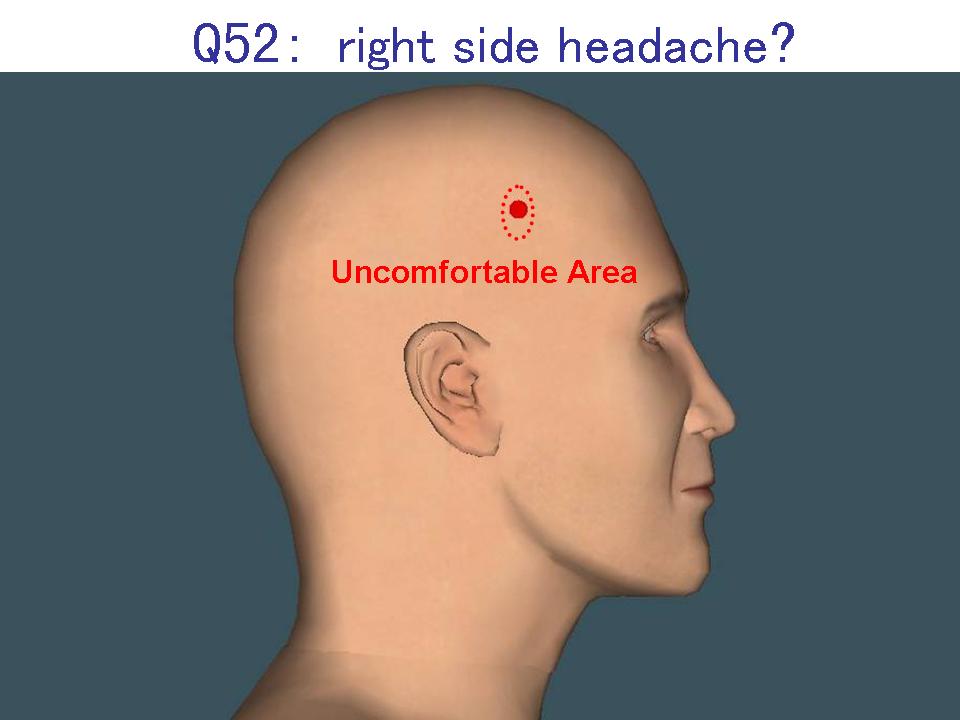
Restoration of missing teeth
In the absence of teeth, their restoration is mandatory. These can be bridges or implants. The second option is preferable because it solves the problem once and for all. The implant completely replaces the lost tooth – both the root and the crown part. This provides a uniform load on the jawbone, prevents its atrophy. In addition, unlike bridge prosthetics, it is not necessary to grind adjacent teeth to fix the structure.
Frequently Asked Questions
How to distinguish symptoms of TMJ dysfunction from other diseases?
Symptoms of pathological processes in the joint are similar to manifestations of other processes:
- myocardial infarction is characterized by pain radiating to the neck, lower jaw and shoulders;
- otitis – accompanied by severe pain in the ears, hearing loss;
- violation of cerebral circulation – proceeds with the presence of dizziness, flickering flies and nausea;
- cervical and thoracic osteochondrosis – similar in localization of pain;
- infringement of the facial nerve – also due to unilateral facial muscle tension and swelling;
- complicated diseases of the gums and teeth – accompanied by inflammation and immobility of the lower jaw.

Therefore, in order to avoid making an incorrect diagnosis, our doctor carefully studies the patient’s life and illness history, conducts a visual and palpation examination, and also prescribes the necessary functional and instrumental studies.
Levin Dmitry Valerievich
Oral and maxillofacial surgeon, chief physician of the Center
What if the treatment does not work?
Conservative treatment does not help in cases where changes in the joint are serious. In this case, one of the types of surgical operations is performed:
- puncture of the cavity and arthroscopy of the joint;
- a small incision to eliminate pathological tissue, adjust the location of the cartilaginous disc and condyle;
- intra-articular intervention in the presence of a tumor process, bone fragments and destruction of bone tissue.


